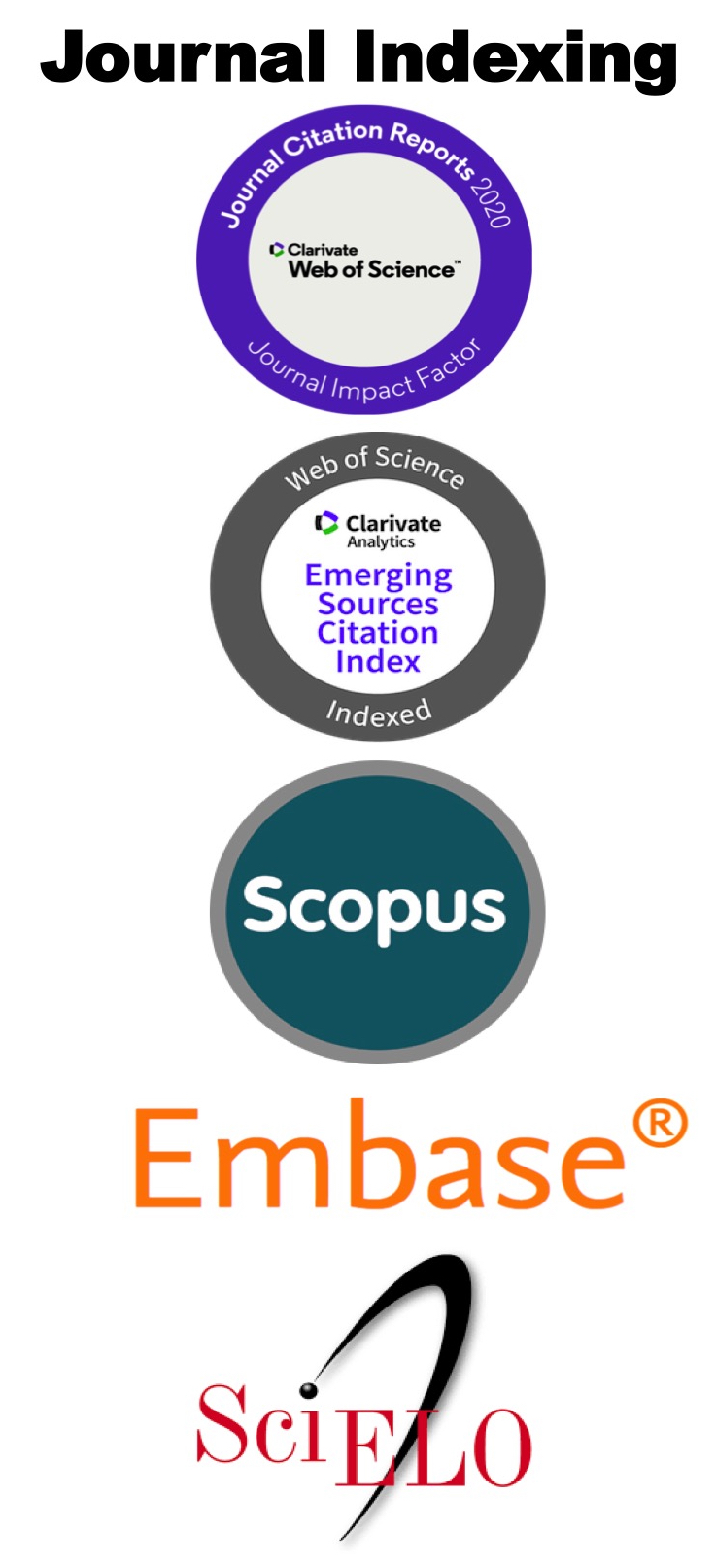Parents/Guardians’ Gender Preferences, Confidence, and Empathy for their Children’s Dentist
Keywords:
Dental Care, Homophobia, Sexual and Gender Minorities, Professional-Patient RelationsAbstract
Objective: To analyze the factors that influence parents’/guardians’ gender preference, confidence level, and empathy level in the dentist treating their child, as well as the factors associated with parents’/guardians’ preference for the dentist's gender identification. Material and Methods: A total of 104 parents/guardians of patients from the pediatric dental clinic of a Brazilian University participated in this cross-sectional study. Data collection occurred in the clinical waiting room by applying a questionnaire about sociodemographic information, characteristics of the dentist that most caught parents’/guardians’ attention, whether the child’s dentist’s gender identification matters to parents’/guardians’, and analog scales designed by the research team gauging preferences in dentist's gender, confidence level and empathy level in their child’s dentist. Statistical analysis was performed using Mann-Whitney U and Kruskal-Wallis tests (p<0.05). Results: Most participants were female (74%) and mothers of patients (63.5%). The proportion of parents/guardians lacking confidence about their child's dentist was higher among those who considered the dentist’s gender identification significant (p=0.045). The empathy scores of parents/guardians toward their child's dentist were higher among female parents/guardians (p=0.012). Parents/guardians who reported caring about the dentist’s gender identification had lower preference scores for an LGBTQ+ dentist (p=0.018). Conclusion: There was no significant difference in the preference for female or male dentists. A low preference for LGBTQ+ dentists was observed among parents/guardians, demonstrating homophobic behavior.
References
O’Brien MB, Copus A, Johnson J, Inglehart MR. Examining the impact of dental hygienists’ professional appearance: Patients’ and dental student providers’ perspectives. J Dent Hyg 2019; 93(4):33-43.
Grembowski D, Spiekerman C, Milgrom P. Linking mother access to dental care and child oral health. Community Dent Oral Epidemiol 2009; 37(5):381-390. https://doi.org/10.1111/j.1600-0528.2009.00486.x
Telford C, Coulter I, Murray L. Exploring socioeconomic disparities in self-reported oral health among adolescents in California. J Am Dent Assoc 2011; 142(1):70-78. https://doi.org/10.14219/jada.archive.2011.0031
Chang CT, Badger GR, Acharya B, Gaw AF, Barratt MS, Chiquet BT. Influence of ethnicity on parental preference for pediatric dental behavioral management techniques. Pediatr Dent 2018; 40(4):265-272.
Miranda MSS, Mourão AM, Lamenha-Lins RM, Nogueira RF, Carcavalli L, Lisboa SO, et al. Pediatric oral health self-reported by caregivers of normal-hearing and hearing-impaired children. Pesqui Bras Odontopediatria Clin Integr 2022; 22:e210124. https://doi.org/10.1590/pboci.2022.024
Barbabela D, Mota JPT, Maia PGM, Bonanato K, Paiva SM, Pordeus IA. Preferência da criança pelo gênero do odontopediatra. Arq em Odontol 2008; 44(2):74-80. [In Portuguse].
Houtzager BA, Möller EL, Maurice-Stam H, Last BF, Grootenhuis MA. Parental perceptions of child vulnerability in a community-based sample: Association with chronic illness and health-related quality of life: Association with chronic illness and health-related quality of life. J Child Health Care 2015; 19(4):454-465. https://doi.org/10.1177/1367493514530954
Lamenha-Lins RM, Paiva SM, Prado IM, Assis Vieira AC, Pithon MM, Maia LC, et al. Facial type, sex and skin color of pediatric patients are associated with dental students’ empathy and self-confidence during dental care. J Dent Child 2022; 89(2):75-82.
Oliveira MA, Vale MP, Bendo CB, Paiva SM, Serra-Negra JM. Influence of negative dental experiences in childhood on the development of dental fear in adulthood: A case-control study. J Oral Rehabil 2017; 44(6):434-441. https://doi.org/10.1111/joor.12513
Luoto A, Lahti S, Nevanperä T, Tolvanen M, Locker D. Oral-health-related quality of life among children with and without dental fear. Int J Paediatr Dent 2009; 19(2):115-120. https://doi.org/10.1111/j.1365-263X.2008.00943.x
Araujo EM, Costa MCN, Hogan VK, Araujo TM, Dias AB, Oliveira LOA. The use of the variable of race/color within public health: Possibilities and limits. Interface 2009; 13(31):383-394. https://doi.org/10.1590/s1414-32832009000400012
Furnas HJ, Garza RM, Li AY, Johnson DJ, Bajaj AK, Kalliainen LK, et al. Gender differences in the professional and personal lives of Plastic Surgeons. Plast Reconstr Surg 2018; 142(1):252-264. https://doi.org/10.1097/PRS.0000000000004478
Moagi MM, van Der Wath AE, Jiyane PM, Rikhotso RS. Mental health challenges of lesbian, gay, bisexual and transgender people: An integrated literature review. Health SA 2021; 26:1487. https://doi.org/10.4102/hsag.v26i0.1487
Bizzeth SR, Beagan BL. “Ah, it’s best not to mention that here:” Experiences of LGBTQ+ health professionals in (heteronormative) workplaces in Canada. Front Sociol 2023; 8:1138628. https://doi.org/10.3389/fsoc.2023.1138628
Taskiran EG, Alan H, Eskin BF, Gumus E, Cakir H, Harmanci SAK. Under the same rainbow: A study on homophobia and discrimination among private sector health care professionals. J Nurs Manag 2021; 29(1):3-15. https://doi.org/10.1111/jonm.13167
Beydağ KD, Alp Dal N. Homophobia levels of parents of nursing students and affecting factors. Perspect Psychiatr Care 2022; 58(2):871-876. https://doi.org/10.1111/ppc.12866
Aldahondo R, Cole R. The experiences of lQ healthcare professionals within military medical culture. Mil Med 2023; 188(11–12):e3606-3612. https://doi.org/10.1093/milmed/usad284
Duncan DT, Cook SH, Wood EP, Regan SD, Chaix B, Tian Y, et al. Structural racism and homophobia evaluated through social media sentiment combined with activity spaces and associations with mental health among young sexual minority men. Soc Sci Med 2023; 320(115755):115755. https://doi.org/10.1016/j.socscimed.2023.115755
Byne W. Sustaining progress toward LGBT health equity: A time for vigilance, advocacy, and scientific inquiry. LGBT Health 2017; 4(1):1-3. https://doi.org/10.1089/lgbt.2016.0211
Danckers M, Nusynowitz J, Jamneshan L, Shalmiyev R, Diaz R, Radix AE. The sexual and gender minority (LGBTQ+) medical trainee: The journey through medical education. BMC Med Educ 2024; 24:67. https://doi.org/10.1186/s12909-024-05047-4
Bidell MP, Stepleman LM. An interdisciplinary approach to lesbian, gay, bisexual, and transgender clinical competence, professional training, and ethical care: Introduction to the special issue. J Homosex 2017; 64(10):1305-1329. https://doi.org/10.1080/00918369.2017.1321360
Argall NL, Johnson E, Cox E, Hislop C, Lefmann SA. Exploring parental perceptions of a family-centred model of care in a public child development service. J Child Health Care 2022; 26(1):5-17. https://doi.org/10.1177/1367493521993972
Derksen F, Bensing J, Lagro-Janssen A. Effectiveness of empathy in general practice: A systematic review. Br J Gen Pract 2013; 63(606):e76-84. https://doi.org/10.3399/bjgp13x660814
Bas-Sarmiento P, Fernández-Gutiérrez M, Baena-Baños M, Correro-Bermejo A, Soler-Martins PS, Torre-Moyano S. Empathy training in health sciences: A systematic review. Nurse Educ Pract 2020; 44(102739):102739. https://doi.org/10.1016/j.nepr.2020.102739
Ostlin P, Eckermann E, Mishra US, Nkowane M, Wallstam E. Gender and health promotion: A multisectoral policy approach. Health Promot Int 2006; 21:25-35. https://doi.org/10.1093/heapro/dal048
Riedijk L, Aarntzen L, van Veelen R, Derks B. Gender (in)equality at the kitchen table: A diary study on how parents’ coordination facilitates an equal task division and relationship quality. Br J Soc Psychol 2024; 63(2):681-707. https://doi.org/10.1111/bjso.12698
Townsend JA, da Fonseca MA, Rodriguez TE, LeHew CW. Gender differences in pediatric dentistry chairs in the United States and Canada. J Clin Pediatr Dent 2020; 44(5):323-331. https://doi.org/10.17796/1053-4625-44.5.6
Américo MA, Portella FF, Zimmer R, Garcia FR, Porto DJ, Barbosa VL, et al. Effect of a toothpaste for sensitive teeth on the sensitivity and effectiveness of in-office dental bleaching: A randomized clinical trial. Oper Dent 2023; 48(6):627-637. https://doi.org/10.2341/23-009-c
Chiarotto A, Maxwell LJ, Ostelo RW, Boers M, Tugwell P, Terwee CB. Measurement properties of visual analogue scale, numeric rating scale, and pain severity subscale of the brief pain inventory in patients with low back pain: A systematic review. J Pain 2019; 20(3):245-263. https://doi.org/10.1016/j.jpain.2018.07.009
Sajadi FS, Torabi-Parizi M, Aftabi R, Krosravi S. Assessing moral skills in general and post-graduate dental students in the Southeast of Iran: A cross-sectional study. Pesqui Bras Odontopediatria Clin Integr 2022; 22:e210194. https://doi.org/10.1590/pboci.2022.080
Busetto L, Wick W, Gumbinger C. How to use and assess qualitative research methods. Neurol Res Pract 2020; 2:14. https://doi.org/10.1186/s42466-020-00059-z
Downloads
Published
How to Cite
Issue
Section
License
Copyright (c) 2024 Pesquisa Brasileira em Odontopediatria e Clínica Integrada

This work is licensed under a Creative Commons Attribution-NonCommercial 4.0 International License.



